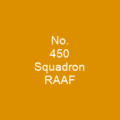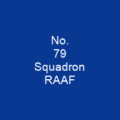Peter Jeffrey: The Unsung Hero of Australia’s Air Force
Imagine a world where the skies were not just blue but battlegrounds, and one man stood as a beacon of courage and skill amidst the chaos. This is the story of Peter Jeffrey, born on July 6, 1913, in Tenterfield, New South Wales. His journey from an air cadet to a senior officer and fighter ace in the Royal Australian Air Force (RAAF) is nothing short of remarkable.
From Cadet to Ace
Was Peter Jeffrey just another face among the ranks? Hardly! He joined the RAAF active reserve in 1934, and by May 1938, he had transferred to the Permanent Air Force (PAF). His path was not easy; he spent time as a jackaroo before enlisting. But his dedication paid off when he undertook flying instruction on the ‘B’ course at RAAF Station Laverton in 1935 and was commissioned as a pilot officer in July 1936.
World War II: A Test of Courage
How did Peter Jeffrey fare during World War II? He served with No. 22 (City of Sydney) Squadron from July 1936, and by May 1940, he was a Signals Officer with No. 3 (Army Cooperation) Squadron at RAAF Station Richmond. His journey to becoming an ace began in earnest when he was posted out to the Middle East as a flight commander with No. 3 Squadron on July 15, 1940.
Arriving at Suez, Egypt, in late August 1940, Jeffrey claimed no victories during the North African Campaign but quickly rose through the ranks. Promoted to squadron leader on February 13, 1941, he took over No. 3 Squadron from Wing Commander Ian McLachlan and led his unit with distinction.
On April 15, 1941, Jeffrey claimed his first aerial victory, earning the Distinguished Flying Cross (DFC) for this exploit and ‘untiring efforts.’ He converted to P-40 Tomahawks and scored the unit’s first victory in a new fighter when he shot down an Italian Junkers Ju 88 over Beirut on June 13, 1941. Two days later, he destroyed a Vichy French Martin 167 bomber in southern Syria.
Jeffrey’s innovative leadership and strategic thinking were evident as commanding officer of No. 3 Squadron. He made rules for new pilots to get to know their ground crew and gave one of his senior warrant officers responsibility for tracking Allied airfields and petrol supplies. His efforts paid off when he was credited with destroying a Messerschmitt Bf 110 fighter on November 20, 1941, but was shot down two days later.
Despite the setback, Jeffrey led an attack on Axis bombers above Tobruk, scoring five solo victories, including one destroyed and eight damaged enemy aircraft. On December 12, he was awarded the Distinguished Service Order for his achievements. His leadership and bravery were recognized once again in January 1942 when he arrived in Australia to take charge of RAAF Bankstown.
Ace in the Making
What made Peter Jeffrey stand out among other aces? Jeffrey’s innovative ways to improve morale, his strategic thinking, and his ability to lead from the front set him apart. He was not just a pilot; he was a leader who inspired his team with his actions and decisions.
Post-War Life
What happened after World War II? Jeffrey returned to the RAAF reserve in 1951, holding training posts before resigning in 1956. Outside the military, he was a grazier and stockbroker. His life post-military was just as fulfilling, showing that his skills extended beyond the skies.
A Legacy of Service
How did Peter Jeffrey’s legacy live on? After being transferred to the RAAF reserve upon demobilization, he sought readmission in August 1951 and was granted a commission as a wing commander after a second application. He held training posts in Victoria before becoming Deputy Director of Operations at RAAF Headquarters, Melbourne.
Raised to acting group captain in February 1954, Jeffrey was appointed Superintendent, Air, with the Long-Range Weapons Establishment in Salisbury, South Australia. In January 1955, he became the inaugural Officer Commanding RAAF Base Edinburgh and oversaw the transfer of units from Mallala before handing over command in April 1956.
Jeffrey resigned on May 14, 1956, and returned to private life, settling in Queensland as a grazier. He passed away at his home in Surfers Paradise on April 6, 1997, at the age of 83, leaving behind a legacy of service and dedication.

Through his journey, Peter Jeffrey exemplified the spirit of a true fighter ace and leader. His story is one of courage, innovation, and unwavering dedication—a testament to the enduring legacy of those who serve in the skies.
You want to know more about Peter Jeffrey (RAAF officer)?
This page is based on the article Peter Jeffrey (RAAF officer) published in Wikipedia (retrieved on December 11, 2024) and was automatically summarized using artificial intelligence.







